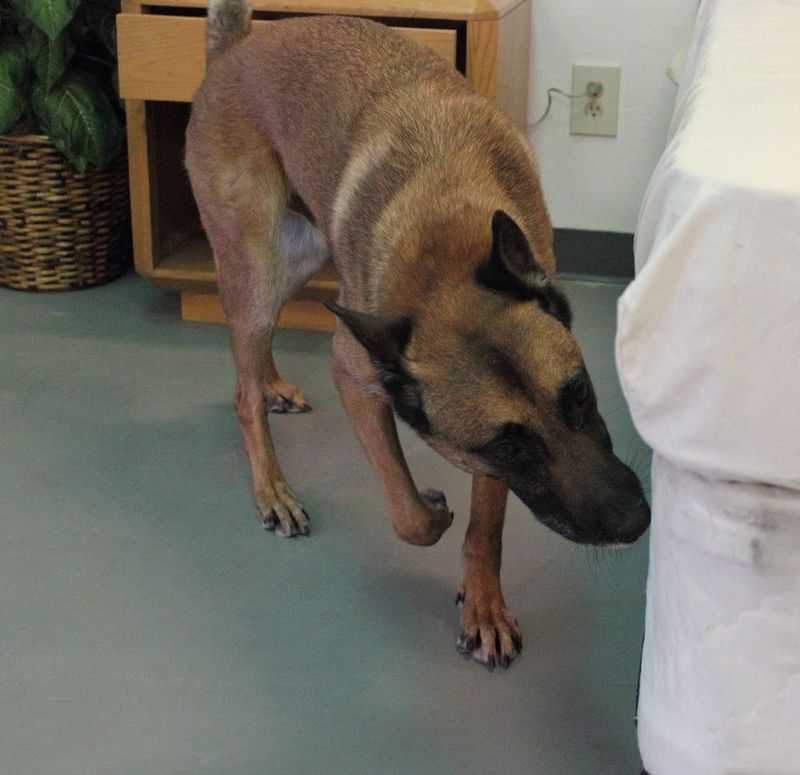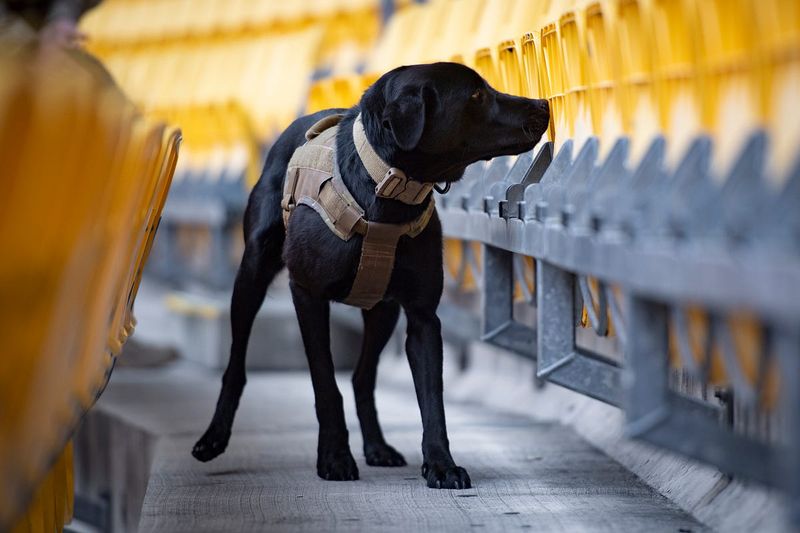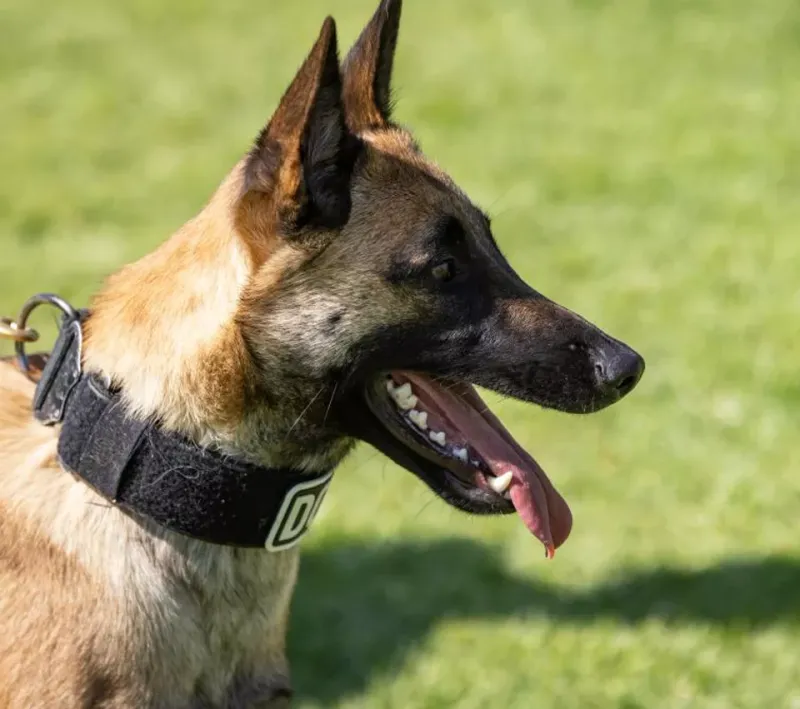Dogs don’t just live in our homes—they quietly scan the world for hidden threats we miss. With senses tuned far beyond human limits, they catch whispers of danger long before alarms sound. From subtle shifts in body chemistry to vibrations in the ground, their early warnings can be lifesaving. Ready to see how your best friend might be your sharpest guardian?
Hyper-Sensitive Hearing
Dogs hear frequencies far beyond human ranges, allowing them to detect faint mechanical hums, distant footsteps, or subtle clicks associated with emerging threats. This heightened auditory perception lets them recognize patterns that suggest danger, such as a door latch easing open or electrical buzzing from malfunctioning devices. Many dogs learn to associate unusual noises with past outcomes, alerting owners before problems escalate. Even in noisy environments, they can isolate relevant sounds, thanks to mobile ears and superior auditory processing. When your dog suddenly perks up or growls at seemingly nothing, it may be responding to a legitimate, barely audible warning.
Scenting Chemical Changes
A dog’s nose can detect parts per trillion, enabling them to smell chemical shifts that precede danger. They can pick up leaking gas, overheating electronics, or smoldering materials before smoke becomes visible. Dogs may also detect adrenaline or cortisol spikes in people, signaling aggression or panic. Their olfactory bulb is proportionally massive, and airflow through their nostrils allows continuous sampling. When a dog fixates on a specific area of a room, sniffs intensely, or refuses to enter a space, it could be reacting to hazardous fumes or chemical reactions. This early detection can buy precious time to act.
Sensing Seismic Vibrations
Many dogs become restless before earthquakes, likely detecting micro-tremors and ground-borne vibrations that humans cannot feel. Their paw pads and skeletal structure amplify sensitivity to minute shifts and frequencies. Some will pace, whine, or attempt to lead owners outside, exhibiting atypical anxiety. Researchers suggest dogs can also sense changes in groundwater movement or atmospheric pressure associated with seismic activity. While not perfect predictors, their behavior often precedes noticeable shaking. Observing sudden, uncharacteristic agitation—especially in multiple dogs at once—can provide an early warning cue to prepare for a potential quake or structural instability nearby.
Reading Micro-Expressions
Dogs excel at decoding human facial cues, posture, and micro-expressions linked to danger or aggression. Over thousands of years, they evolved to interpret our emotional states, noticing tension around the eyes, clenched jaws, and averted gazes. When someone approaches with hostile intent, dogs often respond before we consciously register risk. They triangulate subtle body language with vocal tone and scent, forming a rapid threat assessment. This allows dogs to warn, position themselves protectively, or create distance. Trust their alerts around strangers: attentive staring, body blocking, or low growls may signal perceived danger that your conscious mind hasn’t yet processed.
Detecting Electrical Irregularities
Dogs can notice faint buzzing, ozone scents, or heat signatures near faulty wiring, outlets, or appliances. Their hearing and smell combine to flag arcing or overheating before visible smoke appears. Some dogs paw at walls or stare at outlets when something is off, which owners might misinterpret as random behavior. By noticing subtle environmental anomalies, dogs may prevent electrical fires or shock hazards. If your dog persistently fixates on an electrical area, investigate immediately. Early recognition of unusual odors like hot plastic or the high-pitched whine of electronics can mean the difference between a minor repair and a disaster.
Sensing Storm Fronts
Dogs respond to barometric pressure drops, static electricity buildup, and infrasound produced by thunder, enabling them to anticipate storms. Long before thunderclaps, they may pace, hide, or seek closeness. Some dogs sense lightning-related static on their fur, leading them to shake, whine, or find grounding spots. This early-warning behavior provides time to secure outdoor items, check flashlights, and move to safe areas. Their acute senses can also detect wind shifts and humidity changes that precede severe weather. Watching your dog’s storm anxiety as a data point—rather than a nuisance—can help you prepare before the first flash.
Detecting Toxic Substances
From mold to CO-related combustion byproducts, dogs can smell contaminants that threaten health long before humans notice symptoms. Specialized canines identify dangerous molds, bedbugs, and even explosives, but household pets often alert to spoiled food, cleaning chemical residues, or antifreeze. Persistent sniffing, pawing, or refusal to eat something can indicate detected toxins. Some dogs become agitated near compromised air vents or damp walls harboring hidden growth. Pay attention to sudden aversions or focused sniffing in a specific area. Acting on these cues—ventilating, testing air quality, or inspecting for leaks—can avert poisoning or long-term exposure risks in your home.
Perceiving Human Illness Signals
Dogs can smell volatile organic compounds associated with illness, including infections and metabolic shifts. They may notice low blood sugar, impending seizures, or subtle inflammation before symptoms peak. Changes in body odor, breath, or sweat chemistry cue them to nuzzle, paw, or stay unusually close. Some trained dogs alert to specific conditions, but even untrained pets recognize when something is off. Their early warnings can prompt timely medical checks, reducing risk. When a dog fixates on a body part or becomes clingy without clear reason, consider it a potential health signal rather than mere affection.
Recognizing Territorial Threats
Dogs are attuned to territorial incursions, distinguishing routine noises from unfamiliar footsteps or vehicle patterns near home. They build a cognitive map of neighborhood rhythms and react to deviations—lingering strangers, slow-moving cars, or unusual nighttime activity. Barking, window watching, and strategic positioning at entry points aren’t random; they’re protective behaviors. Their sense of smell also catalogs who belongs and who doesn’t. When a dog’s alert behavior intensifies around the perimeter, it may indicate a potential break-in or suspicious presence. Treat sustained vigilance as a prompt to secure doors, activate lights, and verify outdoor conditions safely.
Sensing Predatory Wildlife
Dogs can detect the scent and movement signatures of predators such as coyotes, snakes, or large birds of prey before humans notice. Their reactions range from sudden silence to intense alertness, depending on threat level. In rural or suburban areas, they may triangulate smells carried on shifting winds and warn by freezing, low growling, or herding family members indoors. Paying attention to these cues can prevent dangerous encounters during hikes or backyard time. If your dog refuses a trail or fixates on brush, consider changing routes, leashing, or increasing vigilance immediately.
Detecting Structural Instability
Subtle creaks, shifting beams, or changing air currents can alert dogs to compromised structures. They may avoid certain staircases, hesitate at thresholds, or refuse basements where mold and rot weaken supports. Dogs also pick up on unusual vibrations from failing appliances or wobbling floors. When an otherwise confident dog balks at a familiar area, inspect for water damage, loose railings, or foundation issues. Their caution can prompt timely repairs that avert accidents. Consider pairing their behavior with a professional assessment if issues persist, especially after storms or renovations.
Alerting to Social Conflict
Dogs detect rising tension through tone, posture, and physiological cues like sweat scent and breathing rate. Before arguments escalate in public spaces or at home, they may position themselves between people, whine, or redirect attention with toys. These interventions can de-escalate conflict and draw awareness to a brewing issue. Their sensitivity also extends to crowded environments, where they recognize agitation and potential violence earlier than we do. If your dog appears anxious amid certain groups, consider relocating to minimize risk. Treat their discomfort as an early indicator of social danger, not mere sensitivity.
Responding to Infrasound
Dogs can perceive low-frequency sounds—generated by storms, explosions, landslides, or distant machinery—that fall below human hearing. Infrasound travels long distances and can foreshadow dangerous events, making dogs uneasy or hyper-alert well in advance. Signs include trembling, panting, pacing, or seeking shelter without obvious cause. Observing these patterns can prompt precautionary steps, like checking news alerts or moving to safer areas. Their sensitivity to acoustic pressure changes complements other senses, forming a comprehensive early-warning system. When your dog reacts intensely to “nothing,” they may be hearing tomorrow’s threat today.













